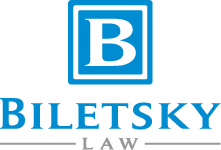Music Synchronization
 Music that is featured in your favorite television show, motion picture, or even commercial can create a unique connection between you and the production. In many instances, you may identify the production through the song or visa-versa. The fact that such a connection can be created just by synchronizing a song with a particular production makes certain songs that much more valuable to a production.
Music that is featured in your favorite television show, motion picture, or even commercial can create a unique connection between you and the production. In many instances, you may identify the production through the song or visa-versa. The fact that such a connection can be created just by synchronizing a song with a particular production makes certain songs that much more valuable to a production.
And herein lies the synchronization license. A synchronization license is an agreement that allows the creator or producer of a type of visual media to use a particular song, or part of a song, in synchronization with a visual media project, or in the form of advertising for the visual project.
If you are either the creator or owner of a song or a visual production, there are several factors that you need to consider:
The Length of Use
The cost of a synchronization license will depend upon the length of the song and whether the entire song is being used or just a few seconds of a song. The length that the song is being featured in the visual production will largely dictate what kind of influence the song will have. Having a song featured in its entirety will often leave a bigger association between the song and the visual production.
In some instances, where an entire song is to be featured in a visual production, a hybrid license is used where the producer of the visual media pays for the entire cost of a song for the privilege of being the first to use the song. After the song’s use, the ownership of the song will then go back to the owner of the song.
Where is the Song being Used?
Another issue to be considerate of is where the song is being used. The impression that a song gives when being featured in the opening or closing scenes is substantailly different from the situational impression that a song being used only in a specific scene gives. Since music that is being featured in the opening and closing scene of a television show or movie commands such an important role, there are premiums that must be paid for obtaining permission to use the song in such a position.
On the other hand, music that is being used for small durations will vary in cost depending on the actual length of the use and the type of use. For the use of a song in certain controversial or explicit scenes, there may need some negotiation to use more popular songs in such a scene.
The Type of Synchronization
In addition to where the song is being used and how long of the song is being used, another pivital concern is the type of use. Type of use generally refers to how the song is going to be used in the production.
Background Instrumental
Generally, instrumental music is cheaper to license than music that has a singing component to it. With a background instrumental sync, the viewers cannot see where the music is being played from and only the viewers, not the characters, can hear the music.
Background Vocal
Slightly more expensive than background instrumental is background vocal. This type of synchronization is where there are words being sang, but you cannot see where someone is singing. This is music that only the viewers can hear but the characters in the movie cannot.
Source
More expensive than background sync is a source synchronization where again, you can hear the singing, but you cannot see the the singer. However with this type of synch, the characters in the movie can hear the song. This plays a different role in the production since the characters are able to interact with the music.
Visual Instrumental
In contrast to the types of synchronization mentioned above are visual synchs. Visual instrumental is a type of synchronization where the viewer can hear the music and also see where the music is coming from.
Visual Vocal
Probably the most expensive type of sync license is a visual vocal license where you can see the person who is singing the song that is being played. The license will be even more expensive where the original singer or band of the song is playing the music.
Visual Dance
Yet another type of licensing is a visual dance sync license. This license, as it sounds, has dance components which are visable to the viewer.
As you can see, there are many different issues that come together when negotiating a synchronization license. Before you decide upon what kind of music to use in your visual production, take into consideration exactly how you plan to use the song.
For more information, or for assistance with a synchronization license, contact Biletsky Law.





